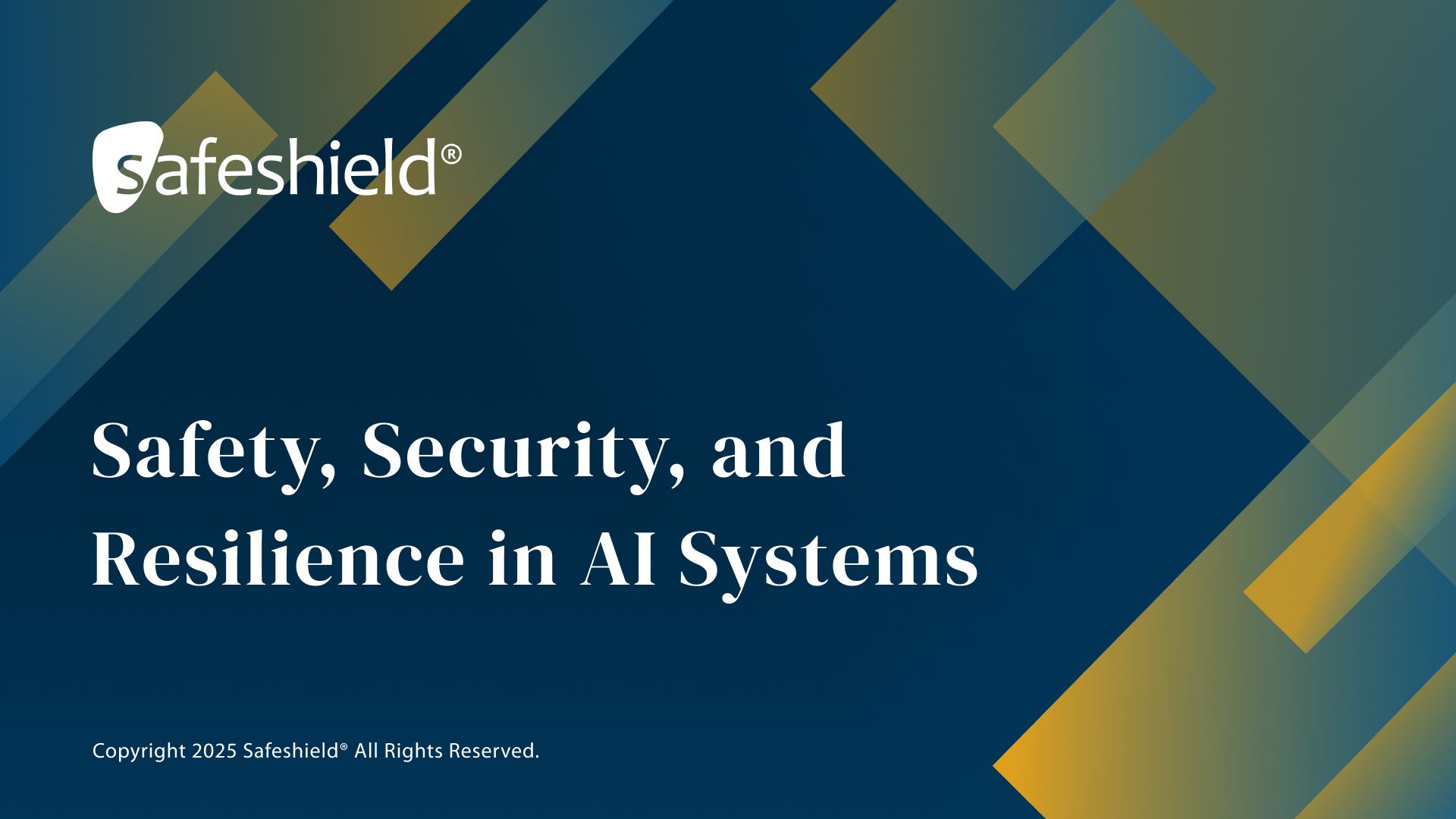How ISO/IEC 42001 Accelerates Your Readiness for the EU AI Act and Other Emerging Laws
October 27, 2025
Artificial Intelligence (AI) is already making decisions about loans, medical diagnoses, hiring, and much, much more. As the adoption of this new technology gains even more traction, governments around the world are racing to regulate how AI is developed and used.
The EU AI Act, finalized in 2024 and entering into force in stages from 2025, is the first comprehensive legal framework designed to regulate AI. Other jurisdictions are moving in the same direction, from Canada’s AI and Data Act to state-level laws in the United States. For businesses, this creates a pressing challenge: how do you prepare for compliance with regulations that are both complex and still evolving?
One solution is already available. ISO/IEC 42001, the first international management system standard for AI, gives businesses a structured way to govern, monitor, and document their AI systems. By adopting it, companies can accelerate their readiness for the EU AI Act and similar laws around the world.
1. Regulations and Why You Shouldn't Wait
The EU AI Act introduces a risk-based approach, placing the highest obligations on "high-risk" AI systems. These include tools used in areas like credit scoring, healthcare, recruitment, and law enforcement. Obligations for high-risk systems cover governance, transparency, accountability, documentation, and human oversight. Non-compliance can lead to fines of up to 7 percent of global annual turnover,
a figure that places AI risks on par with GDPR.
Other regions are following suit. Canada’s proposed AI and Data Act requires companies to assess and mitigate risks of harm and bias. The United States is adopting a sector-driven model, supported by the NIST AI Risk Management Framework. The UK has signalled a lighter-touch, regulator-led approach. Despite their differences, these frameworks share common principles: transparency, risk management, human oversight, and accountability.
The message is clear. AI compliance is becoming a current obligation that requires immediate attention.
2. Where Companies Struggle with AI Laws
Even well-resourced organizations face difficulties when translating legal requirements into operational processes. Some common challenges include:
- Interpreting abstract obligations. Laws demand "transparency" or "explainability," but do not always define how these should be achieved in practice.
- Maintaining documentation. AI systems evolve over time, making it difficult to keep audit-ready records of datasets, training methods, and performance monitoring.
- Cross-functional governance. AI often touches multiple teams, from IT and data science to compliance and legal. Without clear ownership, gaps appear.
- Avoiding fragmentation. Some companies adopt piecemeal approaches, creating isolated policies or controls that fail to integrate into a holistic governance framework.
These gaps create compliance risks. They also increase the likelihood of deploying AI that is unsafe, biased, or non-transparent, which can undermine customer trust as well as regulatory standing.
3. ISO/IEC 42001
ISO/IEC 42001 was published in 2023 to provide adopters with a structured Artificial Intelligence Management System (AIMS). Unlike technical standards that only apply to algorithms or datasets, ISO/IEC 42001 is designed to cover the entire lifecycle of AI, from design to decommissioning.
Some of 42001’s key features are:
- Governance structures that assign clear accountability for AI systems.
- Risk management processes specific to AI, including bias, fairness, and algorithmic drift.
- Requirements for transparency and explainability in AI decision-making.
- Integration with existing management system standards, such as ISO/IEC 27001 for information security and ISO 9001 for quality.
Because it is flexible and scalable, ISO/IEC 42001 can be adopted by both startups and SMEs deploying a single model and larger businesses managing dozens of AI applications.
4. How ISO/IEC 42001 Maps to the EU AI Act (and Others)
ISO/IEC 42001 is not a law, but it does provide a management system that aligns closely with regulatory requirements. For example:
- Transparency. The EU AI Act requires that organizations explain how high-risk AI systems make decisions. ISO/IEC 42001 requires processes for documenting AI models, datasets, and decision logic.
- Risk management. Regulators demand proactive identification and mitigation of risks. ISO/IEC 42001 includes specific controls for managing AI risks across the lifecycle.
- Data governance. The EU AI Act emphasizes high-quality training data. ISO/IEC 42001 requires organizations to manage datasets carefully, including validation and monitoring.
- Human oversight. Both the Act and the standard require human responsibility for AI outcomes, ensuring that systems are not fully autonomous without accountability.
- Continuous monitoring. ISO/IEC 42001’s emphasis on ongoing monitoring supports compliance with the Act’s requirement for post-market surveillance.
By adopting ISO/IEC 42001, organizations create a framework that works as a one-size-fits-all solution to upcoming global regulations, and its flexibility allows businesses to keep up with the evolving nature of these regulations.
5. Global Readiness Through ISO/IEC 42001
While the EU AI Act is currently the most comprehensive regulation, it will not be the last. Businesses that wait for each jurisdiction to publish new laws risk constant rework. ISO/IEC 42001 provides a global baseline that reflects widely accepted principles of AI governance.
This makes it a useful, catch-all tool. A company can implement ISO/IEC 42001 once, then demonstrate compliance with multiple frameworks as they emerge. This reduces costs, accelerates compliance projects, and provides reassurance to regulators, customers, and partners in different markets.
6. Practical Benefits of Aligning Early
Businesses that align with ISO/IEC 42001 before regulations take effect gain several advantages:
- Efficiency. A single framework reduces duplication of effort across multiple jurisdictions.
- Trust. Certification to a recognized international standard demonstrates credibility to clients, regulators, and investors.
- Competitive advantage. Early movers are more likely to win contracts where responsible AI is a requirement.
Scalability. ISO/IEC 42001 is designed to grow with the business, supporting both small pilots and enterprise-wide AI deployments.
Conclusion
The EU AI Act and similar frameworks around the world are quickly setting binding requirements for businesses that develop and use AI. For many, the challenge is to meet compliance obligations in a way that is consistent, and adaptable.
ISO/IEC 42001 provides a ready-made framework that helps meet these goals. By adopting it early, businesses accelerate their readiness for the EU AI Act, reduce compliance risks, and position themselves as leaders in responsible AI.
However, aligning with ISO/IEC 42001 requires skilled individuals who understand both the technical risks of AI and the governance processes demanded by regulators. Organizations that invest in training staff to understand the complexities of aligning with this standard, will be far better equipped to translate its guidance into day-to-day practice and to demonstrate compliance during audits.
For businesses, this means building internal expertise is just as important as adopting the right framework. For individuals, it presents a valuable career opportunity: becoming the in-house expert who ensures AI systems are safe, transparent, and compliant whilst still allowing for innovation.
Our ISO/IEC 42001 training programs
provide the knowledge and tools to allow professionals to guide businesses through the process of preparing for global regulation.
Subscribe to our YouTube channel @SafeshieldTraining
to explore free courses on AI governance, risk management, and compliance. It is an excellent way to learn the foundations of responsible AI and understand key principles such as accountability, traceability, explainability, non-discrimination, privacy, and security. It is also a great opportunity to deepen your knowledge and stay informed about emerging frameworks and best practices shaping the future of trustworthy AI.
Share this article





